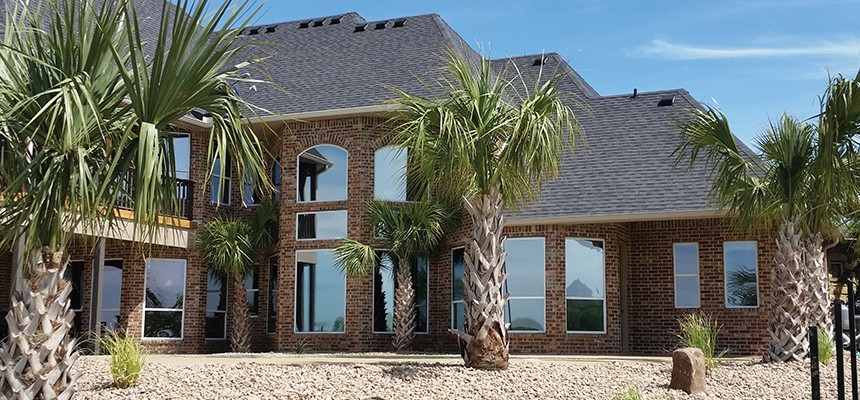Residential Window Tint: Keep Your Home Comfortable Year-Round
Residential Window Tint: Keep Your Home Comfortable Year-Round
Blog Article
How Residential Home Window Tinting Improves Your Home's Power Efficiency
Residential window tinting offers an engaging solution for home owners seeking to improve energy efficiency within their living areas. By applying specialized movies to home windows, it properly minimizes warm transfer, thereby stabilizing indoor temperatures and lessening the demand for too much home heating or air conditioning.
Understanding Window Tinting
Understanding window tinting is vital for house owners looking for to improve both convenience and power effectiveness in their home. Residential Window Tint. Home window tinting includes the application of a thin film to the inside or outside surface area of glass home windows. This movie can dramatically regulate the quantity of sunlight and heat that enters a home, thus influencing interior environment conditions
There are various types of window tinting films readily available, each with distinctive buildings. The efficiency of window tinting is often determined by its Visible Light Transmission (VLT) percent, which suggests how much light can pass with the film.
Advantages of Energy Performance
Window tinting not just enhances visual appeals yet likewise plays a substantial function in boosting energy performance within domestic rooms. By decreasing warmth transfer through home windows, tinted films develop a more secure indoor climate, which can bring about significant decreases in power consumption for cooling and heating. This energy effectiveness converts into reduced utility bills, giving property owners with significant long-term cost savings.

Furthermore, window tinting boosts the convenience of living spaces. By minimizing glow and blocking hazardous UV rays, colored home windows produce an even more pleasurable environment, which can bring about boosted well-being for occupants. The protection versus UV rays also aids preserve furniture and flooring from fading, contributing to the long life of family things.
Just How Tinting Works
Tinting films run through a mix of sophisticated products and innovations designed to regulate the amount of solar power entering a home. Largely composed of polyester, these movies commonly incorporate ceramic or metallic bits that mirror and take in warm. This twin ability permits them to considerably lower the penetration of ultraviolet (UV) rays and infrared radiation while permitting noticeable light to go through.
The performance of window tinting is determined by its solar warmth gain coefficient (SHGC), which indicates just how much solar power is transmitted with the content home window. Lower SHGC values are better as they denote higher warmth denial. Additionally, window colors can include a variety of shades, enabling home owners to customize their aesthetic preferences while improving power performance.
Additionally, these movies work as a barrier, avoiding warm loss throughout cooler months by mirroring indoor warmth back into the home. This thermal insulation result enhances the cooling benefits gained during warmer months, adding to a well balanced interior environment year-round. By managing solar energy successfully, property window tinting not just enhances convenience yet additionally plays an navigate to this website essential function in minimizing power usage and reducing utility expenses.
Choosing the Right Tint

There are numerous sorts of window movies available, including colored, metalized, and ceramic. Colored films are economical yet may have limited durability. Metalized films use far better heat being rejected yet can interfere with electronic signals. Ceramic movies give outstanding warm control without endangering visibility and are extremely long lasting, making them a preferred choice.
Noticeable light transmission (VLT) is one more critical variable, as it shows the quantity of all-natural light that can go through the tinted glass. Homeowners should select a tint with a VLT that matches their lights preferences while still providing ample glare reduction.
Furthermore, evaluating the solar warm gain why not try this out coefficient (SHGC) can assist identify exactly how well a tint can block warmth from sunlight. A lower SHGC indicates better heat control, ultimately boosting power performance.
Installation and Upkeep Tips
Correct setup and upkeep are important parts in optimizing the benefits of household home window tinting. Experts also make use of specialized techniques and tools, which can boost the resilience and performance of the tint.
Adhering to setup, maintenance is crucial to prolong the life of the window movie. It is recommended to wait at least 30 days prior to cleaning the tinted windows to allow the glue to heal completely.
Attending to these problems quickly can prevent additional damage and maintain power effectiveness. By adhering to these installation and upkeep ideas, property owners can ensure their home window tinting proceeds to offer significant power cost savings and comfort for years to come.
Verdict
In verdict, property window tinting offers as an efficient solution for boosting energy efficiency within homes. By lowering warm transfer and obstructing dangerous UV rays, window movies contribute to lower power consumption and boosted indoor convenience. The choice of appropriate tinting products, along with appropriate installation and upkeep, even more takes full advantage of these advantages. Eventually, home window tinting represents a lasting investment that not just lowers utility bills however additionally advertises a comfortable living setting throughout the year.
Window tinting includes the application of a slim film to the interior or exterior surface area of glass home windows. By reducing warm transfer via home windows, tinted films produce an extra secure indoor climate, which can lead to considerable decreases in power intake for home heating and cooling.The effectiveness of window tinting is determined by its solar warmth gain coefficient (SHGC), which shows how much solar energy is transmitted with the home window. By handling solar power properly, residential window tinting not only enhances comfort but likewise plays a crucial function in lowering power intake and lowering utility bills.
By reducing heat transfer and blocking hazardous UV rays, window films contribute to lower power intake and boosted interior convenience.
Report this page